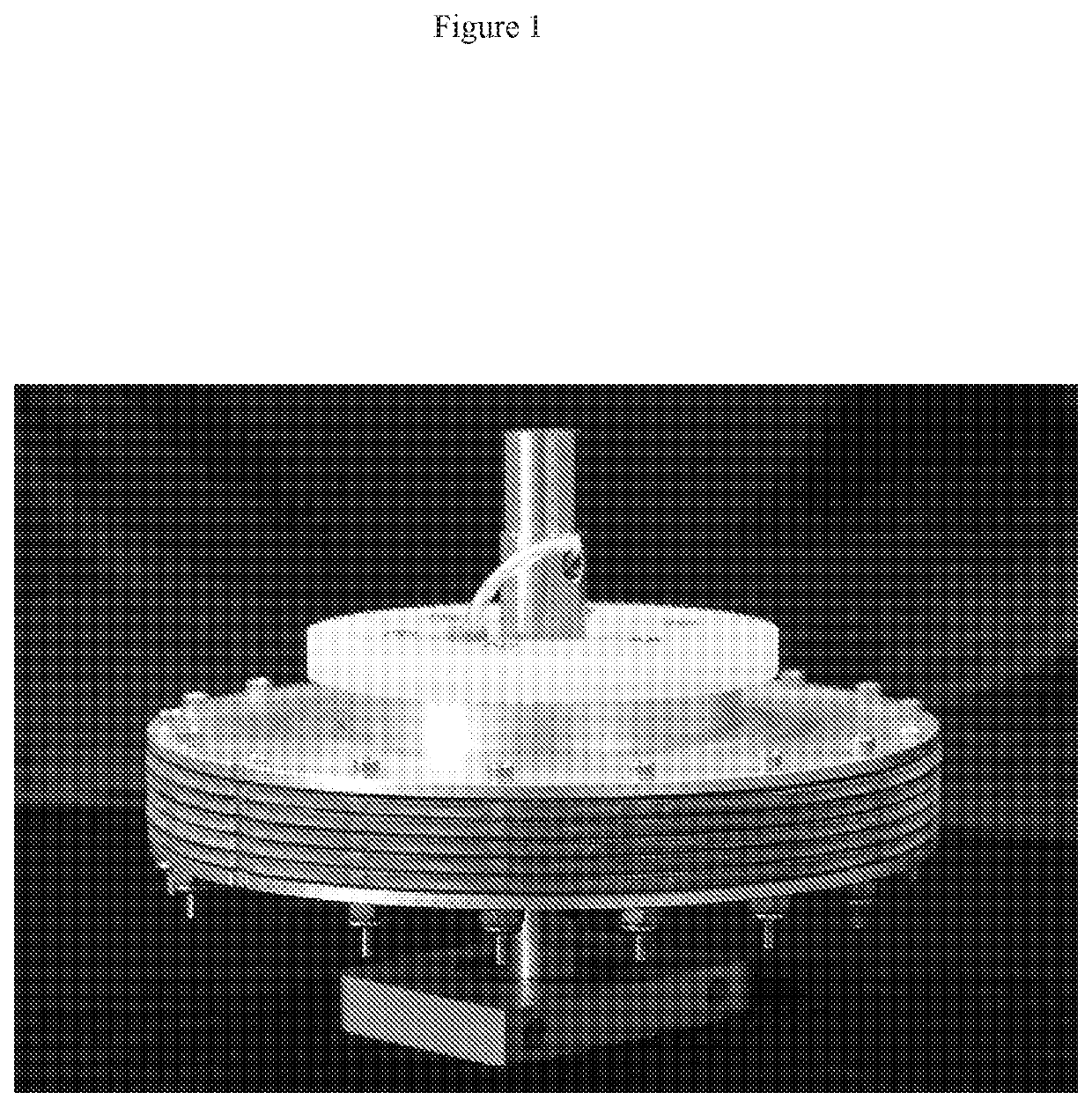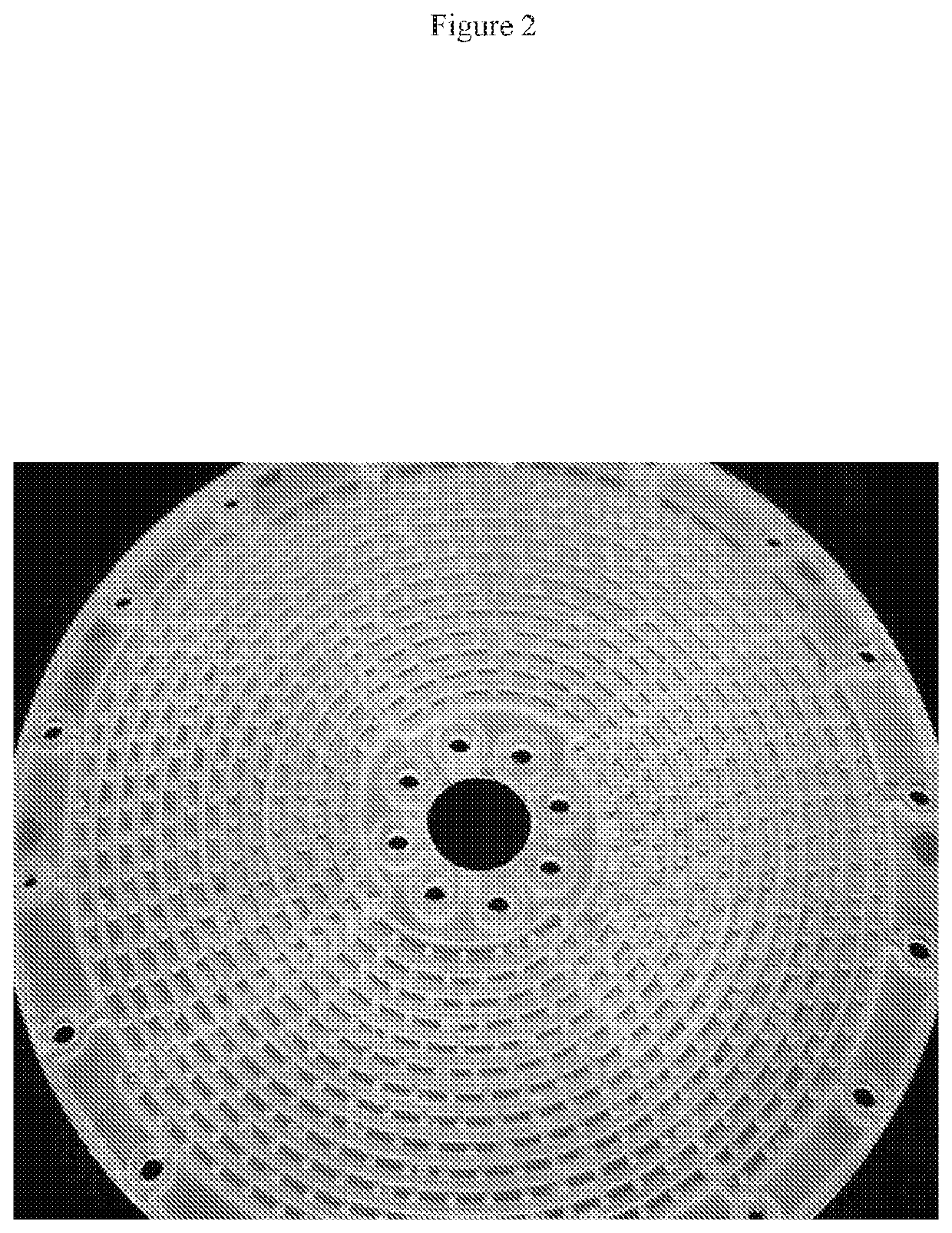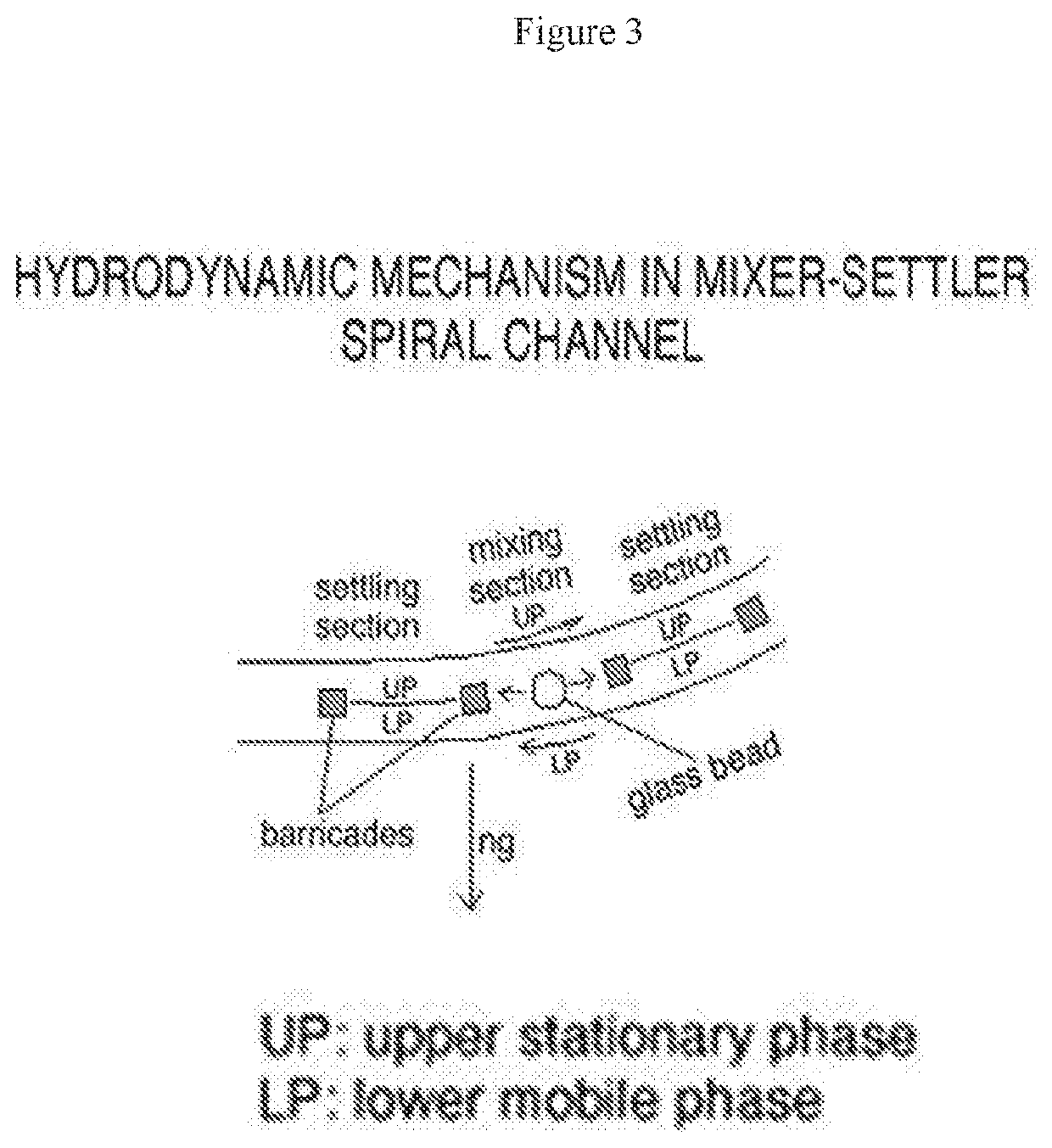Virus purification
a virus and purification technology, applied in the field of virus purification, can solve the problems of low recovery of molecules, loss of activity, and difficulty in performing in larger scale, and the purification of large molecules of downstream processes is difficult to achieve, and the separation method is the most reliabl
- Summary
- Abstract
- Description
- Claims
- Application Information
AI Technical Summary
Benefits of technology
Problems solved by technology
Method used
Image
Examples
example 1
Determining a Suitable Solvent System
[0104]A two phase solvent system was developed by adapting solvent systems used in protein extraction experiments and mixing the components to make two immiscible phases. Solutions of AV9-GFP virus particles (Vector Labs, Malvern, Pa.) were added to potassium phosphate / polyethylene glycol (MW 3350, PEG 3350) two-phase solutions, such, the following. The UV absorbance, as measure of the distribution of protein, was determined and is in column 2 of the table.
[0105]
TABLE 1Partition ratio [upperSolvent, by weight in waterphase / lower phase]containing VLP'sabs. 280 nmA. 12.5% PEG 3350 12.5% KH2PO42.3B. 12.5% PEG 33503.66.25% KH2PO4 / 6.25% K2HPO4
[0106]The preferred partitioning ratio of the VLP's is about 1. If partitioning of VLP's is close to 1, then the values mean the VLP's could be separated from the bulk of the protein and other materials which would move out later than the particles with the mobile lower phase in CCC. Since the VLP's are concentra...
example 2
[0123]It was considered best to perform a CCC separation with the solvent system of sample #1 and the solvent system was mixed according to Table 6 in 10 times the volume, for example, 114 ml solution A and 229 ml solution C, 57 ml water and no NaCl (second formulation B). The solvent system of sample #2 with 25% NaCl added could be used as well, but starting with fewer components was considered more efficient. The final concentration of PEG 400 and NaCitrate were both 20% in that solvent system. The solvent system was run in 1 / K mode with upper phase mobile (CCW rotation with flow into the bottom. U o H elution mode) at a flow rate of 0.5 ml / min and at 800 RPM in the STS-4 rotor. Eluate was collected in a fraction collector with 3 ml per tube.
[0124]
TABLE 8K (expected columnAnalyte componentvolume)280 nm (protein)0.1260 nm (DNA)0.22Titer1.7
[0125]The sample was added as the water component to small volumes of the stock solutions as shown in Table 6, the preci...
PUM
| Property | Measurement | Unit |
|---|---|---|
| partition coefficient | aaaaa | aaaaa |
| volume | aaaaa | aaaaa |
| flow rate | aaaaa | aaaaa |
Abstract
Description
Claims
Application Information
 Login to View More
Login to View More - R&D
- Intellectual Property
- Life Sciences
- Materials
- Tech Scout
- Unparalleled Data Quality
- Higher Quality Content
- 60% Fewer Hallucinations
Browse by: Latest US Patents, China's latest patents, Technical Efficacy Thesaurus, Application Domain, Technology Topic, Popular Technical Reports.
© 2025 PatSnap. All rights reserved.Legal|Privacy policy|Modern Slavery Act Transparency Statement|Sitemap|About US| Contact US: help@patsnap.com



